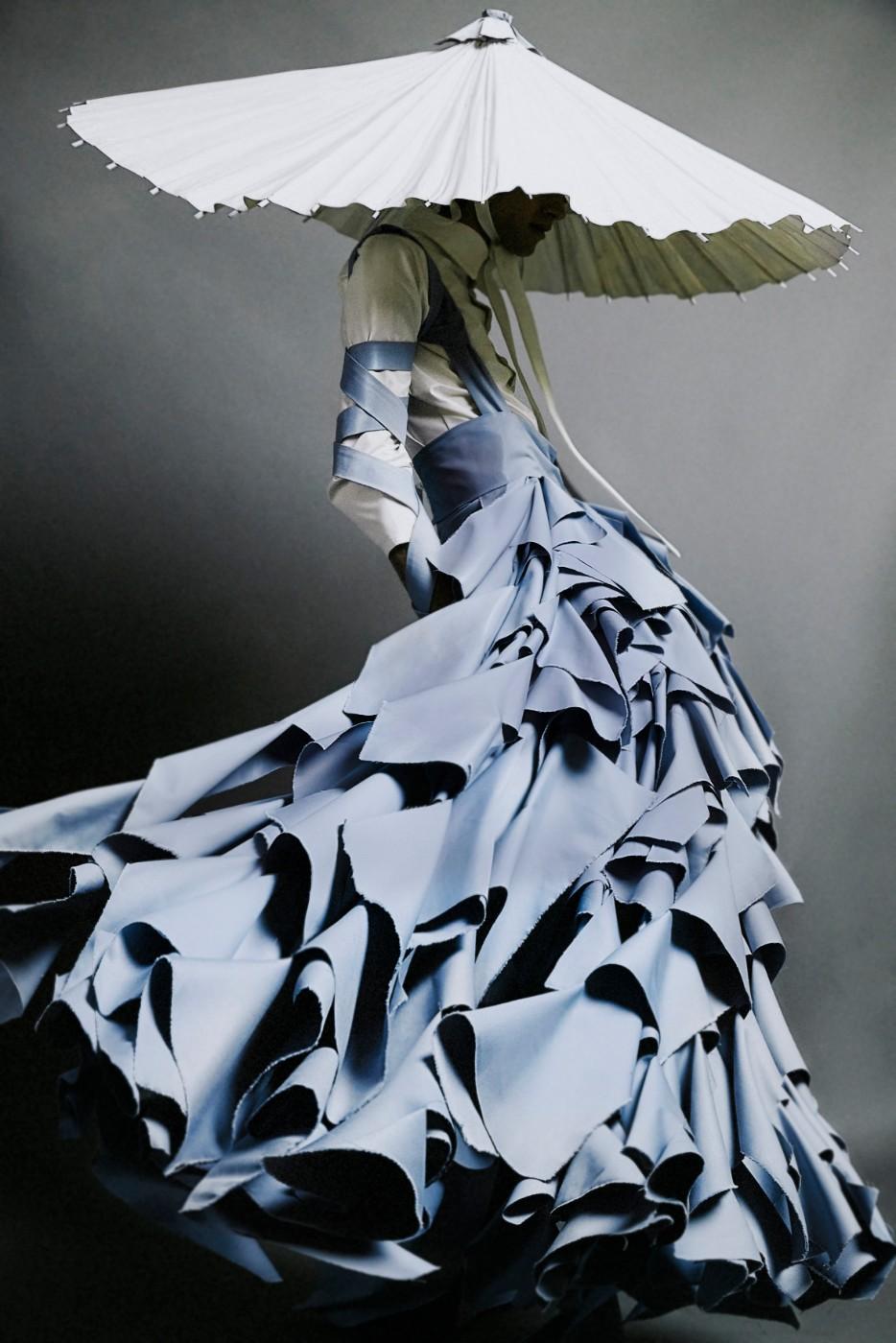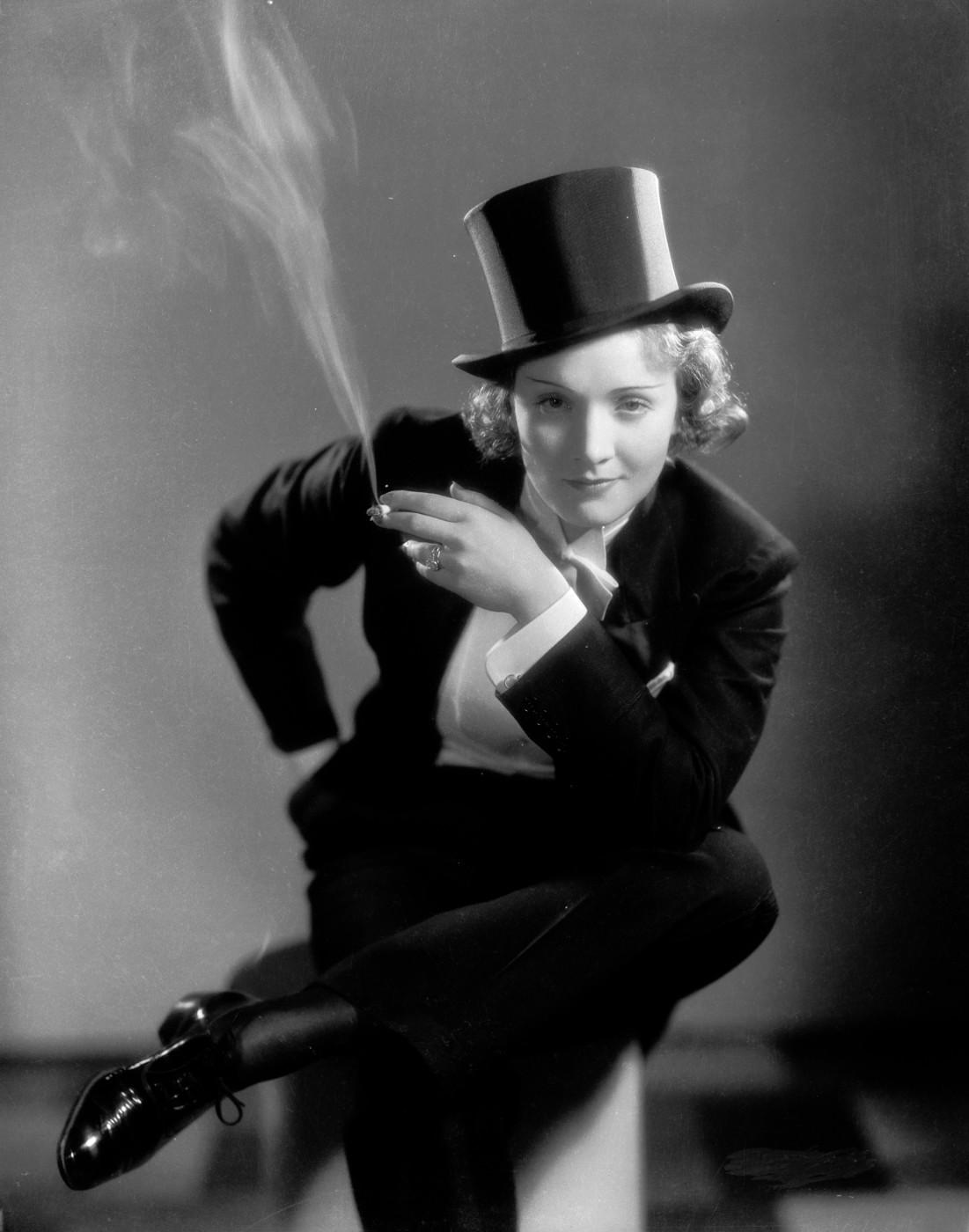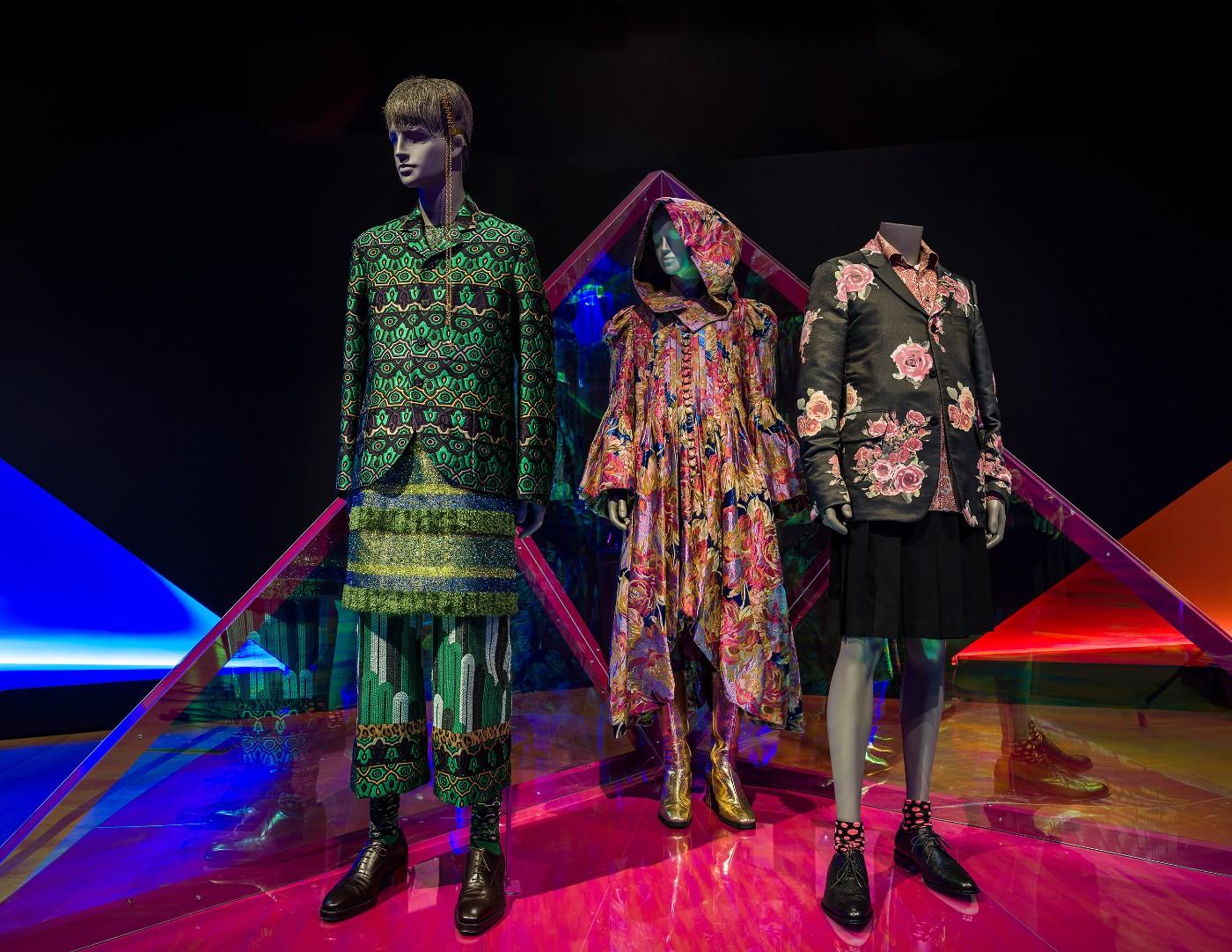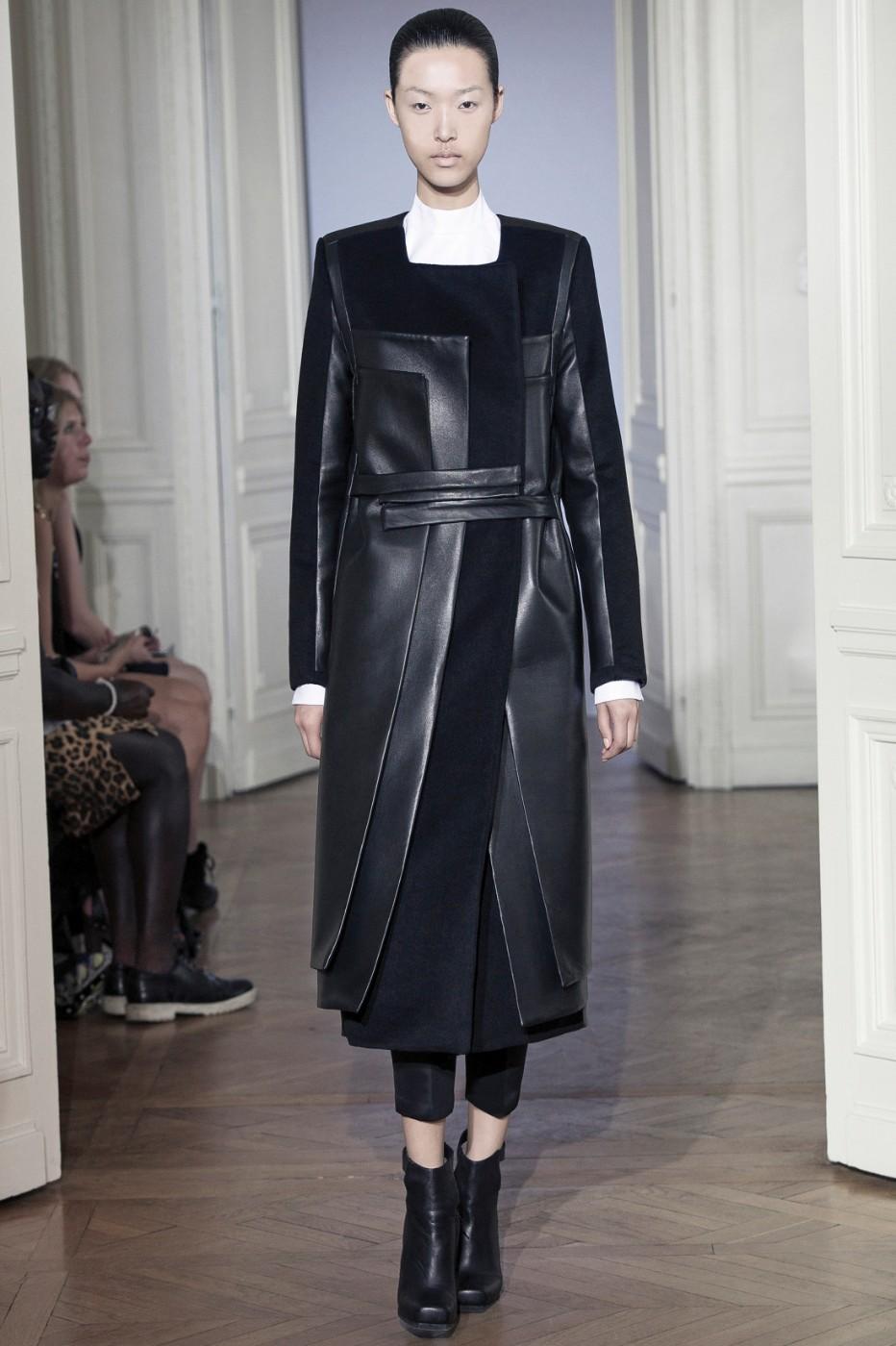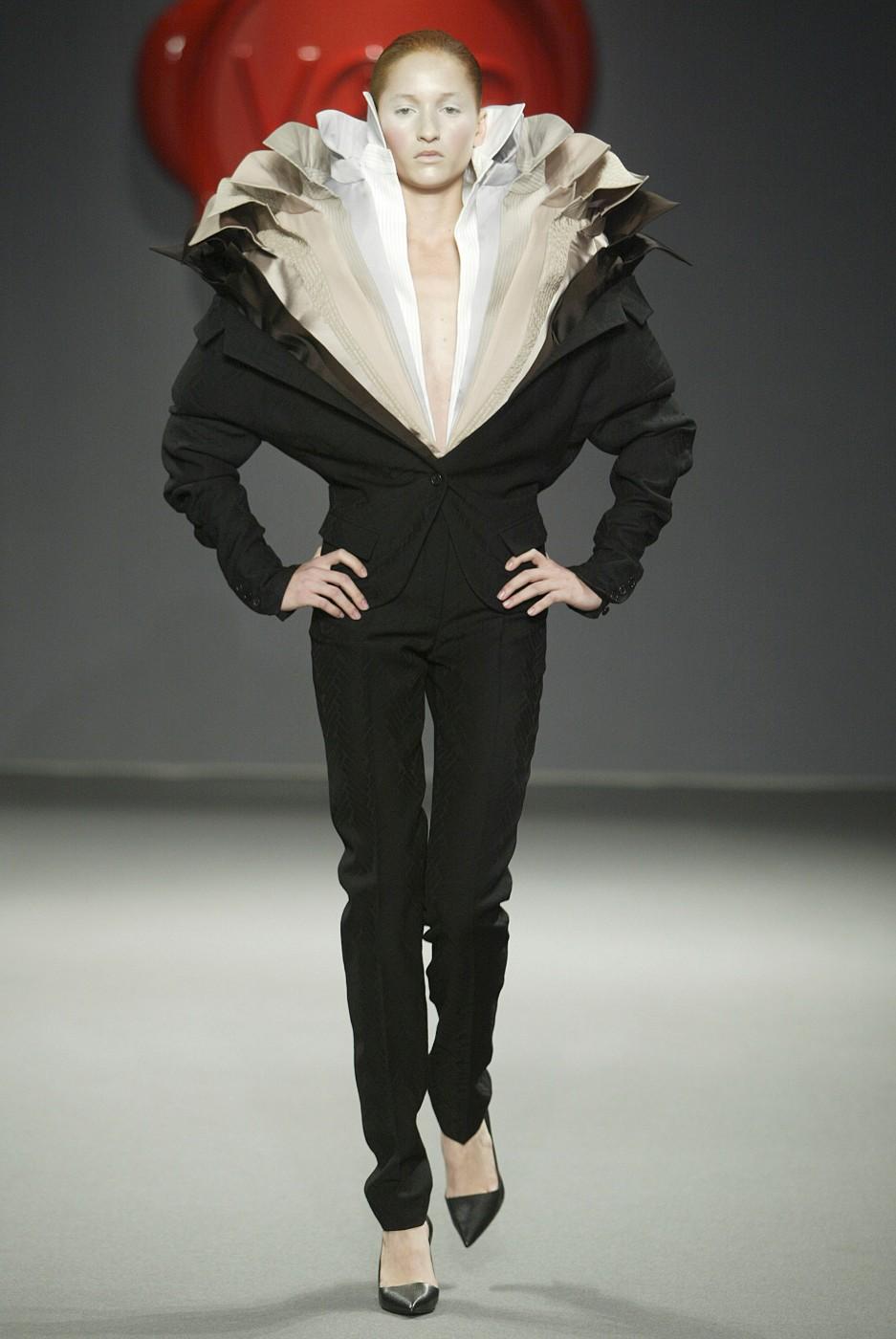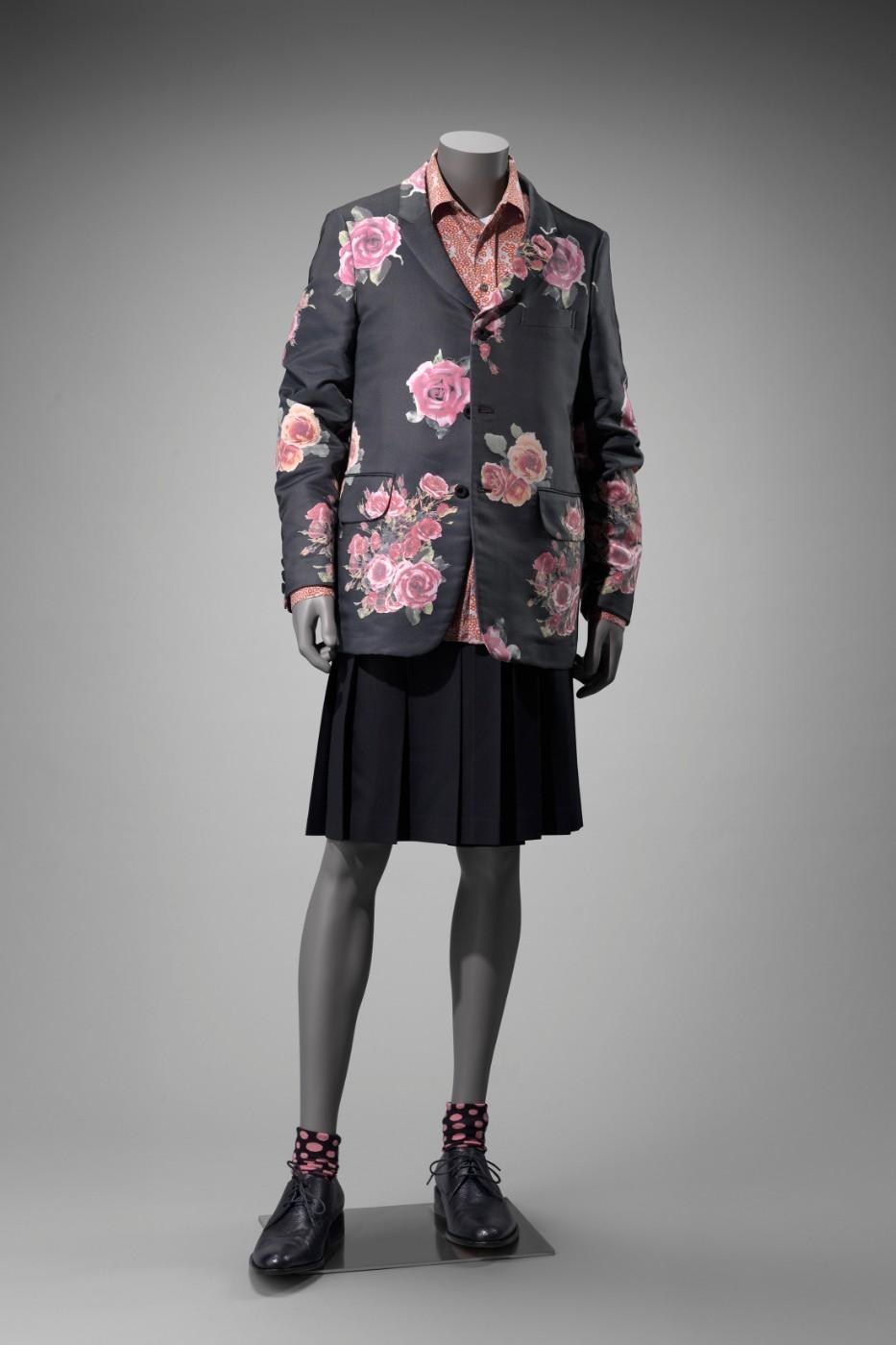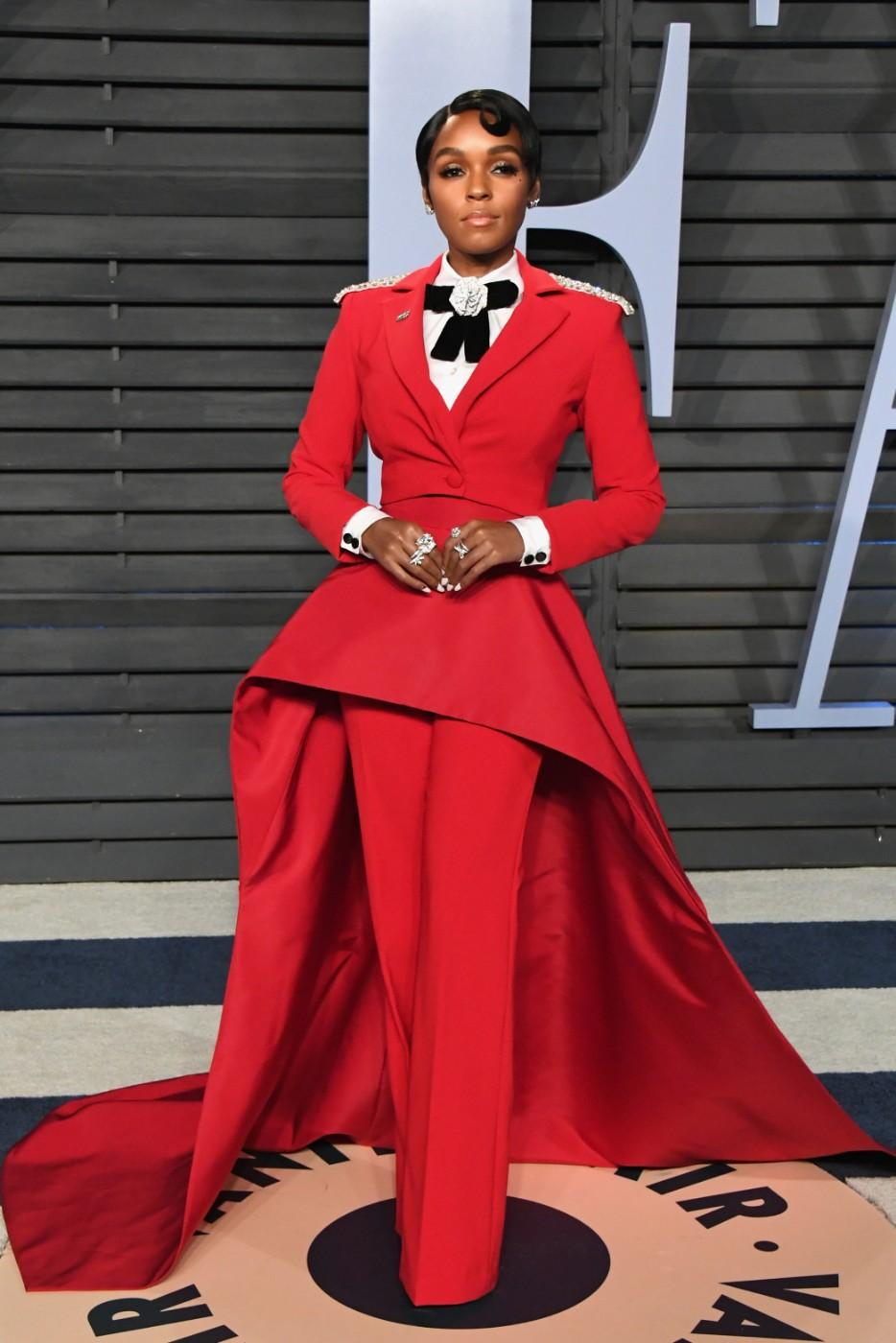Defining gender has become one of the most complex issues in identity politics, making the curator's task of navigating such a minefield a risky undertaking. What terms do we use in talking about identity when Facebook has more than 70 ways to describe a user’s gender? Finamore contextualizes the theme with historical nods to late 19th century developments of pants-wearing women who also smoked and rode bicycles and the tuxedo and top hat donned by Marlene Dietrich in the 1930 film Morocco. But the show is firmly entrenched in the here and now.
A magnificent dress by Italian designer Alessandro Trincone is the signature image for the exhibition (shown above). The elegant, cascading skirt of grey ruffles topped with a parasol-like headpiece shadowing the wearers face and therefore their identity could proudly be worn by a woman but was designed for a man. It was worn by the rapper Young Thug (a.k.a. Jeffery Lamar Williams) on the cover of his 2016 album No, My Name is JEFFERY. The outfit has a Samurai-inspired feel, giving license to skirt wearing warriors past and present.




